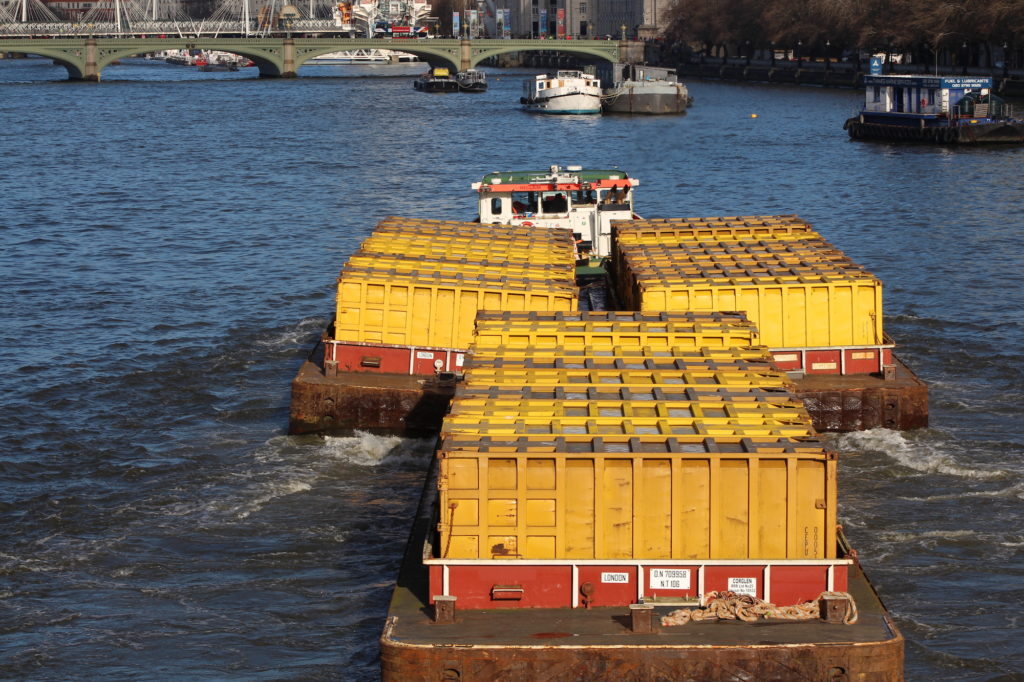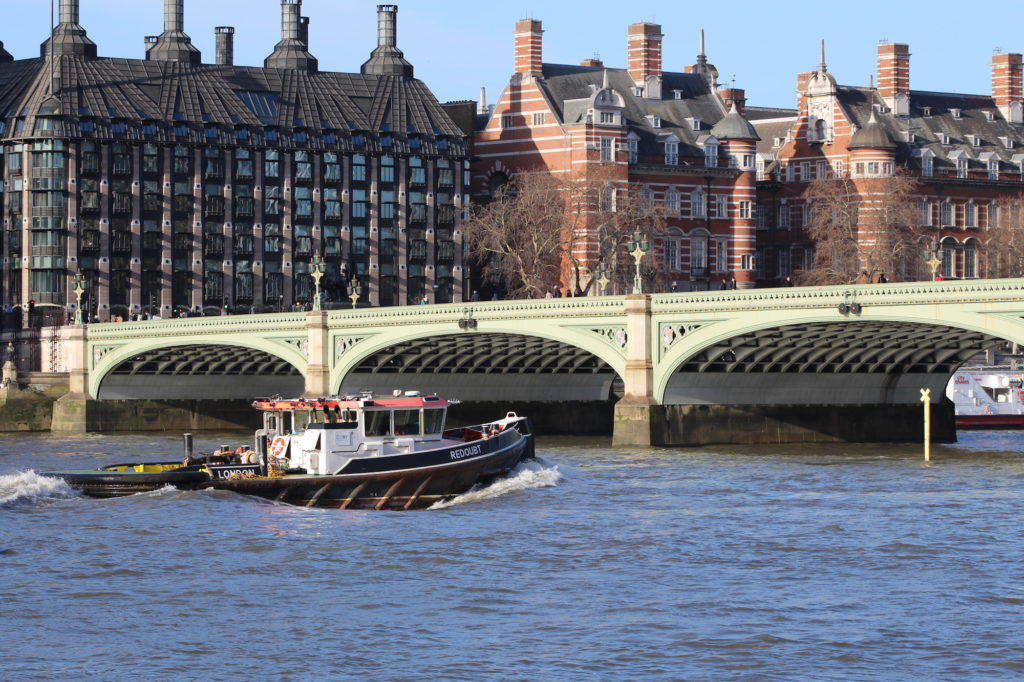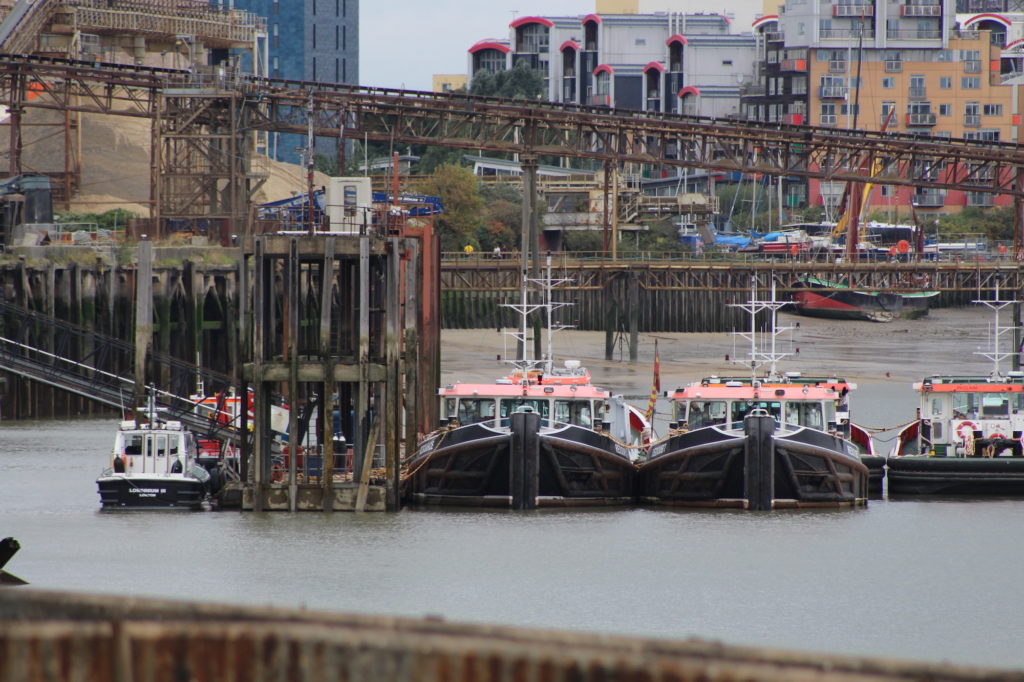Towing away London’s rubbish…
As you walk along the banks of the central London Thames, you can see there’s no doubt about the sense of purpose of waste-towing Cory tugs passing on the river. Their names are a strong indication of their resolve. As Reclaim; Recovery; Redoubt; Regain; and Resource tow their barges up and downstream, you can watch them skilfully navigating the shoals and bridges of this tightly knit section of the river, making use of the tides as they go.

Cory Riverside Energy have been operating a lighterage business on the Thames for over 120 years, transferring cargo from large ships of different sizes to barges taking short trips to piers, depots or warehouses, so that their Captains and crews have both a long tradition and the experience “to deal with anything that the Thames can put in their way.”
The company started life in 1896 as William Cory & Son Ltd., transporting over five million tonnes of coal, coke and patent fuel into London each year. Their barges, which would have been empty for the return journey, were then used for the removal of household and other waste from London. “Every tug leaving London on the Thames left with a cargo of rubbish from London’s streets, for ultimate disposal on the marshlands of Kent and Essex.”


Cory are rightly proud of their work along the Thames today. Transporting London’s waste by river saves around 100,000 lorries a year from congesting and polluting the city’s streets. Using the rhythm of the tides, their tugs tow barges loaded with empty containers upstream on the flood tide, delivering them to borough collection points along the river. Once there, empty containers are lifted off and filled containers are loaded in their place by crane. The barges are then towed back downstream on the ebb tide.

Cory’s waste recovery service at their Belvedere plant, converting waste into energy, supplies power to 160,000 homes; provides 200,000 tonnes of ash left over from the incineration process to be recycled into aggregate for a variety of construction projects; and recovers 10,000 tonnes of air pollution control residue, which after careful processing is converted into building blocks.




The maximum number of crew on their tugs is six, “made up of the Master, Mate and Engineer, plus two or three Lightermen.”



If you happen to walk along the central London section of the Thames Path National Trail for any length of time, you will become aware of the river traffic, and among the many vessels navigating that part of the river, you are bound see the brightly liveried Cory tugs towing their barges of lemon-yellow containers. Their highly trained Captains make their passage look easy. It is not. The Thames has some awkward and fast-flowing currents, particularly around the bridges, and shallow stretches, all of which have to be learnt. And at the moment, with so much construction under way, on the Tideway sewer and elsewhere, vessels have to take extra care. This is emphasised in short section of one of the films on Cory’s site “What we do”, where Cory Tug Master John Dwan says among all the other aspects of his job “Health and safety come first of all”.
A past winner of the famous Doggett’s Coat and Badge Race John Dwan explains how his family, along with some others, is intricately bound up with work along the Thames, the tradition passing across the generations from father to son, to nephews and cousins… Branches of the Dwan family have worked at a whole variety of jobs along the river for over five hundred years. So if you watch the passing tugs and barges carefully, you will sense the continuity and see a proud strand of history played out before you.


Further information:
Cory Riverside Energy
Thames Tugs for history, images and details of Cory tugs
Follow Cory Energy on Twitter: @CoryEnergy